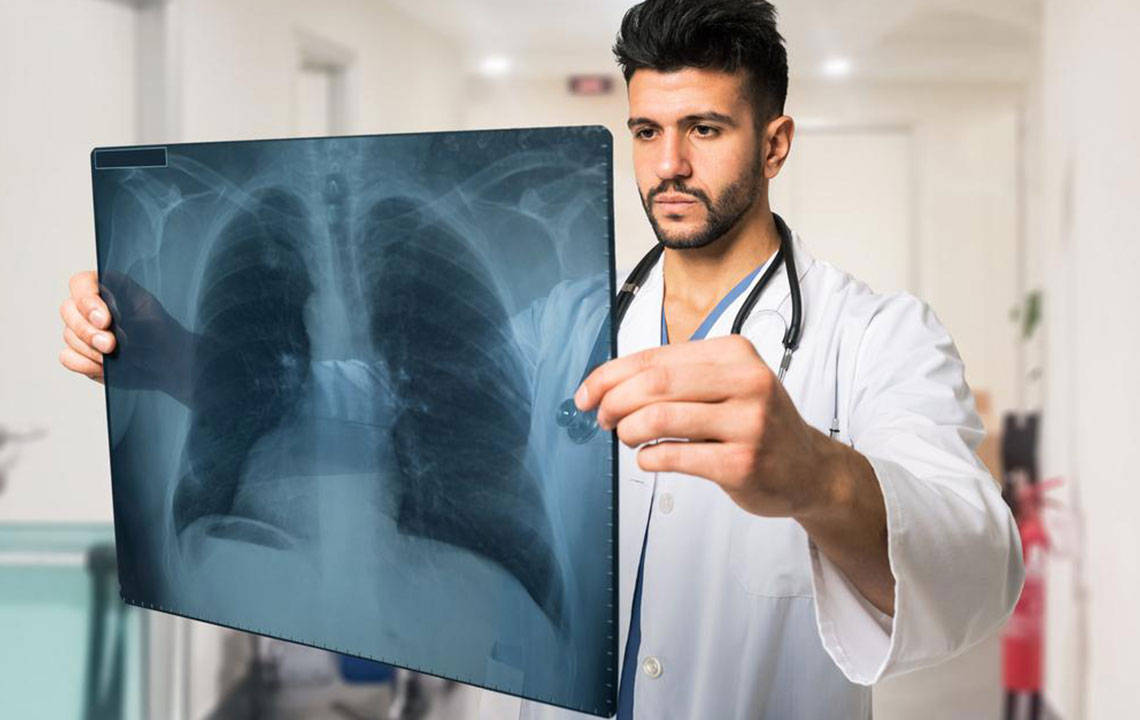Comprehensive Guide to Pulmonary Fibrosis: Understanding Lung Scarring Disease
Pulmonary fibrosis is a serious lung disease marked by progressive scarring of lung tissue, leading to breathing difficulties. This comprehensive guide explores causes, symptoms, risk factors, diagnosis, and treatment options, emphasizing the importance of early detection and lifestyle adjustments. Although no cure exists, modern therapies and lifestyle changes can significantly improve quality of life for patients. Stay informed to understand this complex condition better and seek prompt medical attention if symptoms arise.

Understanding Pulmonary Fibrosis: Key Facts and Insights
Introduction to Pulmonary Fibrosis
Pulmonary fibrosis is a progressive and potentially life-threatening interstitial lung disease characterized by the abnormal buildup of scar tissue within the lung parenchyma. This scarring process leads to significant alterations in lung architecture, ultimately impairing respiratory function. The condition can develop gradually or rapidly, depending on its underlying cause, and affects individuals Worldwide, regardless of age, although it is more prevalent among middle-aged and older adults. Despite extensive research, the exact etiology of pulmonary fibrosis remains elusive, with various environmental, genetic, and occupational factors playing roles in its development.
Currently, there is no definitive cure for pulmonary fibrosis. Treatment strategies are primarily aimed at slowing disease progression, alleviating symptoms, and improving quality of life. As medical science advances, newer therapies such as antifibrotic drugs have demonstrated efficacy in managing this challenging condition, but comprehensive patient care continues to be essential. Recognizing early signs and understanding risk factors are vital for timely diagnosis and intervention.
Causes and Risk Factors of Pulmonary Fibrosis
Prolonged inhalation of harmful dusts such as asbestos, silica, metal particles, or wood dust can damage lung tissue over time.
Chronic exposure to allergens like mold spores, bird feathers, or other environmental irritants increases the risk of lung scarring.
Certain medications, including some chemotherapy drugs and antibiotics, may have side effects that damage lung tissue.
Genetic predispositions and familial history can also influence susceptibility.
Who is Most Susceptible?
Middle-aged and elderly populations are at a higher risk due to cumulative environmental exposures and age-related lung degeneration.
Men tend to develop pulmonary fibrosis more frequently than women, possibly due to occupational and lifestyle differences.
Long-term smokers show increased vulnerability owing to the harmful effects of tobacco on lung tissue integrity.
Individuals working in high-risk industries such as construction, mining, agriculture, and manufacturing with frequent exposure to airborne pollutants face elevated risks.
Recognizing the Symptoms and Warning Signs
Persistent difficulty breathing, especially during physical activity or exertion, is often the earliest symptom.
A chronic dry cough that does not improve is common among affected individuals.
Fatigue, general weakness, and feelings of tiredness are prevalent in early and advanced stages.
Unintended weight loss can occur as the disease progresses.
Muscle and joint discomfort may be associated with disease activity.
In advanced phases, clubbing of fingers and toes, a change in finger shape due to tissue changes, may be observed.
Potential Complications and Associated Risks
Scarring of lung tissue can lead to increased pressure in the pulmonary arteries, resulting in pulmonary hypertension.
This elevated pressure may cause strain on the right side of the heart, potentially leading to right-sided heart failure.
Inadequate oxygenation can result in respiratory failure, requiring urgent medical intervention.
Prolonged disease exposure increases the risk of developing lung cancer.
Other complications include blood clots, lung collapse (pneumothorax), and recurrent respiratory infections.
Diagnostic Approaches and Methods
A comprehensive review of medical history, occupational exposure history, and family history is crucial for diagnosis.
Physical examination focusing on respiratory sounds and symptoms assessment forms the initial clinical evaluation.
Specialized Tests and Imaging Studies
Imaging techniques such as high-resolution computed tomography (HRCT) scans are essential for detecting characteristic lung scarring patterns.
Chest X-rays, echocardiography, and pulmonary function tests (PFTs) help evaluate lung capacity, airflow, and oxygen saturation levels.
Exercise testing and pulse oximetry assess how well the lungs function during activity.
Blood gas analyses provide insights into oxygen and carbon dioxide exchange efficiency.
In some cases, lung biopsies may be required to confirm diagnosis, especially when imaging results are inconclusive.
Blood tests to evaluate kidney and liver function are often performed to rule out other systemic causes.
Current Treatment Options and Management Strategies
While no definitive cure exists, medications such as antifibrotic agents (e.g., pirfenidone and nintedanib) have shown promise in slowing disease progression.
Supportive treatments like supplemental oxygen improve breathing comfort and reduce undue strain on the heart.
Physical therapy and pulmonary rehabilitation programs are beneficial in enhancing lung capacity and overall physical function.
In advanced cases, lung transplantation may be considered, offering a potential cure for selected candidates.
Lifestyle Modifications and Patient Care
Complete abstinence from smoking is critical, as smoking accelerates disease progression.
A balanced diet rich in fruits, vegetables, lean protein sources, and low-fat options supports immune function and general health.
Avoidance of processed foods, trans fats, excess salt, and sugar reduces inflammation and cardiovascular strain.
Engaging in gentle, guided exercise programs can help improve lung capacity and reduce stress levels.
Ensuring adequate rest and good sleep hygiene helps conserve energy and promotes physical and mental well-being.
Understanding pulmonary fibrosis's complex nature is vital for early detection, management, and improving patient outcomes. Ongoing research continues to shed light on its causes and potential treatments, offering hope to those affected by this challenging lung disease.





